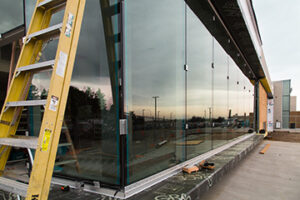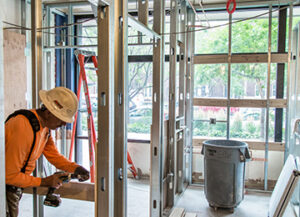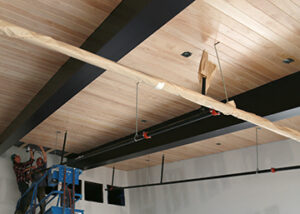The decision of how to put a developer’s or client’s vision into reality is as old as construction itself. As with most things in life, this decision always depends on how we can achieve what we want as quickly and cost-efficiently as possible. To complicate this issue, our industry has developed and marketed terms such as design-build and design-bid-build to quantify a variety of approaches. Both approaches or delivery methods have their pros and cons – mostly depending on the complexity, size and risk tolerances of any given project.
Let’s First Review These Delivery Methods
DESIGN-BUILD
Firstly, this delivery method suggests that your construction project is managed through a single entity: a Design-Builder. It also implies that your builder has the capacity to provide you with a turn-key process often starting from brokering the property and finishing with the construction of your project, but correspondingly includes anything in between. This can consist of all design, engineering, municipal submittals and, in some cases, the financing of a project. This delivery method is, in the true sense of the phrase, a one-stop shop where the client delegates all responsibilities to the Design-Builder.
DESIGN-BID-BUILD
To start off, this delivery method is mostly used by public and municipal entities as required by state statues. It’s also used by some private entities who are strictly looking for low-cost bids. The term suggests that a client has hired independent consultants, designers and engineers to complete a set of documents that best reflects the intent of the developer. This is followed by the public solicitation and bidding of the documents to determine to lowest price for the documented scope of work.

Now Let’s Look at the Pros and Cons of Design-Build vs. Design-Bid-Build
PROS AND CONS OF THE DESIGN-BUILD DELIVERY METHOD
Pros: This delivery method has proven to be the most efficient in terms of the overall timeline of a development which allows early occupancy and therefore permits a developer to earn money much sooner.
The Design-Build delivery method also shifts a lot of involvement, uncertainty and risks away from a developer and allows them to focus on their business and practices. A good Design-Builder will communicate just the right amount of information without overwhelming its audience. Additionally, a good Design-Builder is trusted to make decisions on behalf of the client which will increase the overall value of the project.
The clear advantages of this delivery are:
a) The close relationship between designers and builder that allows real-time schedule, cost updates and interventions, which further allows for thoughtful decision making throughout the entire development.
b) The insight and coordination of the Design-Builder into all of systems and assemblies to avoid timely (and most of the time, costly) changes and interpretations.
This delivery, if executed correctly, allows certain (design and administrative) steps to be bypassed for the sake of time, cost and schedule considerations.
Cons: There are well known hesitations from clients to delegate so many of the responsibilities to a single entity. The most common concern is that a client does not believe that this delivery method yields the most cost-efficient result from a lack of competitive bidding. The common belief is that a Design-Builder will be less inclined to provide market rate general conditions, overhead, fee percentages, and play favors to close subcontractors and suppliers.

PROS AND CONS OF THE DESIGN-BID-BUILD DELIVERY METHOD
Pros: The Design-Bid-Build (also referred to as hard-bid) delivery of a project can generate a competitiveness among the bidders.
Cons: This delivery delegates all the risk for completed and coordinated documents onto the developers and their designers’ shoulders. The bidding builders and their subcontractors and suppliers will only bid what is clearly shown on the documents and any variations or miss-coordinated scope will result in often lengthy and costly finger-pointing among the builder, designer and client regarding is responsible for the correction of the issue at hand. This can lead to overall schedule extensions with costly change orders to address the gaps in expectations and provided documentation.
The Design-Bid-Build delivery also has the tendency for the individual members of a team (designers, planners, engineers, builders, clients, etc.) to work less in concert and more for the singular motivation of protecting their own interests.
This delivery, as opposed to the design-build delivery, does not provide for a competent builder to provide early cost and schedule input to maintain an owner’s overall budget and timeline. Often times, the bids collected during the competitive bidding process do not meet the developer’s expectations, which triggers re-design and re-engineering and, again, more time and more cost.
Conclusion: Design-Build vs. Design-Bid-Build
Overall, the primary difference when considering design-build vs. design-bid-build delivery methods is design-build includes both design and construction under one contract vs. design-bid-build includes separate contracts to the developer. That said, there are a few final points to consider when comparing the two.
A design-build delivery requires a high level of trust and expertise from all parties to eliminate the stigmas as noted under the cons paragraph above. If the relationship functions at this level, the design-build method is the clear way to complete any project. The developer will benefit from streamlined decision-making, accelerated progress and an overall heightened development experience.
If a client is confident and willing to take the risk that a contracted designer’s documents are complete, coordinated and the scope reflects the available funds, a design-bid-build delivery could be advantageous. However, the creation of a finite scope of work can also be a disadvantage since the contractor’s bid reflects just that finite scope. Any unexpected costs or design deficiencies during bidding can create exposure to the developer. The additional design efforts to reconcile these exposures can and will hinder a project’s performance.
There is no doubt that each delivery method should be evaluated for a project. The overall decision to use design-build vs. design-bid-build should include these considerations based on the needs of a project.

July 16, 2019
by Henry Zurbrugg